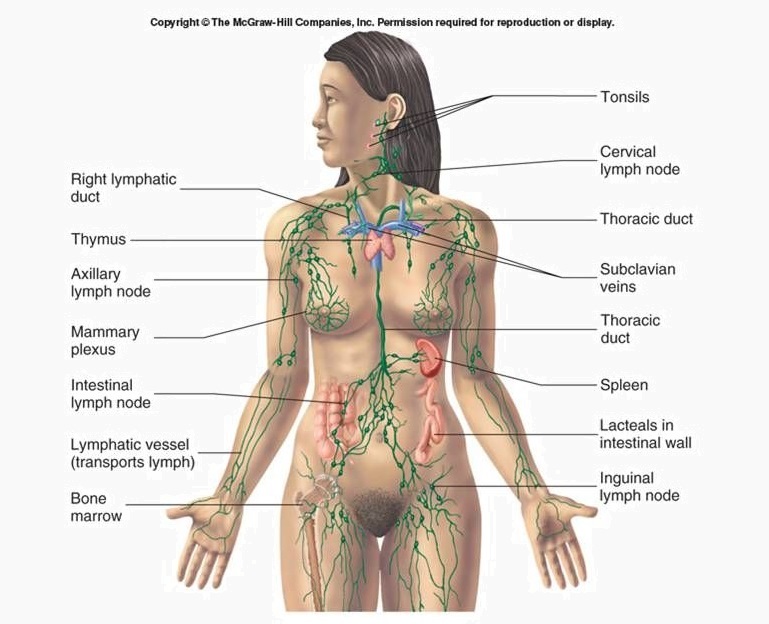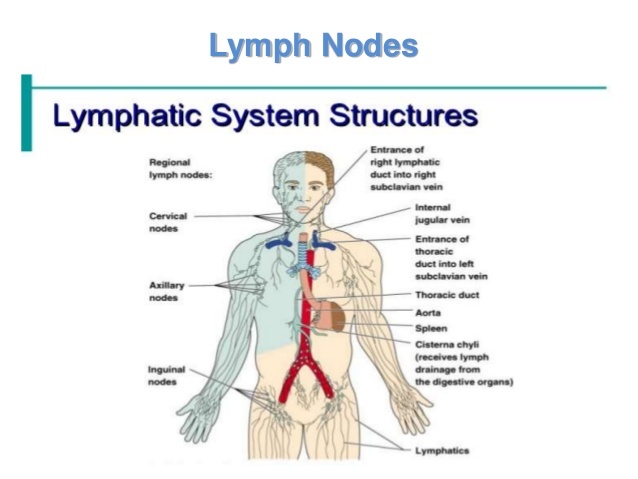Describe the Structure and Functions of the Lymphatic System
LEARNING OBJECTIVES Describe the structure and function of the lymphatic system KEY TAKEAWAYS Key Points The lymphatic system is a circulatory system that drains fluid from the blood vessels. The lymphatic system is a system of lymph nodes vessels and organs that runs throughout the body and often seems mysterious and elusive as it does not receive the same attention as other body systems like the cardiovascular or digestive systems.

Lymphatic System Definition Function Structure Biology Dictionary
Click card to see definition.

. To absorb fats and other substances from the digestive tract this topic will be discussed in the Digestive System Unit. The lymphatic system serves three key functions in supporting and protecting the human body. This system has three main functions.
People may be aware of lymph nodes in the neck when they become swollen with a sore throat or infection. Lymphatic System Functions. The functions of the lymphatic system include protecting your body from illness causing invaders maintaining body fluid levels absorbing digestive tract fats and.
This fluid is essentially plasma that leaks out of cardiovascular capillaries into the tissues due to the forces of hydrostatic or oncotic pressure. In addition to lymph nodes lymphatic fluid and lymphatic vessels the system is comprised of the thymus gland tonsils spleen and bone marrow. The lymphatic system helps maintain fluid balance in the body by collecting excess fluid and particulate matter from tissues and depositing them in the bloodstream.
The lymphatic system is a blunt-ended linear flow system in which tissue fluids cells and large extracellular molecules collectively called lymph are drained into the initial lymphatic capillary vessels that begin at the interstitial spaces of tissues and organs. To collect and recycle the excess interstitial fluid and its dissolved substances. Describe the structure and function of the.
The lymphatic system collects lymph from the interstitial spaces between the cells in body tissues. Click on the items that describe the structure or function of the lymphatic system in vertebrates. -Collects and transports excess extracellular fluid to reduce or remove swelling.
Lymphatic capillaries collect lymph fluid from the tissues which allows them to regulate the pressure of interstitial fluid. 4 rows The lymphatic system is a system of specialized vessels and organs whose main function is to. The lymphatic system consists of all lymphatic vessels and lymphoid organs.
This is the first article in a six-part series examining the lymphatic system and immunity. The lymphatic system consists of. The primary function of the lymphatic system is to transport lymph a fluid containing infection-fighting white blood cells throughout the body.
One of the main functions of the lymphatic system is to drain the excess interstitial fluid that accumulates. This balance of fluid is vital. Tap card to see definition.
Removing interstitial fluid at the same rate it is produced helps maintain blood pressure and. The lymphatic system is a network of vessels and organs that isolate and neutralize foreign agents and particles that can do the body harm. The swelling of lymph nodes during an infection and the transport of lymphocytes.
Describe the structure and function of the following lymphatic terms. Lymphatic System Structure and Function Structure of the Lymphatic System The lymphatic system consists of lymphatic vessels and associated lymphoid organs. Describe the functions of the lymphatic system.
The lymphatic system is essential for our survival. View the full answer. It helps maintain fluid balance in the body by collecting excess fluid and particulate m.
Lymphatic System Function. The lymphatic system is the system of vessels cells and organs that carries excess fluids to the bloodstream and filters pathogens from the blood. It helps in draining excess tissue fluid from the extracellular spaces back into the blood.
-Helps to defend the body against disease-causing agents. It also examines factors that can compromise lymphatic flow briefly explores the role of the lymphatic system in fat transportation and introduces the. The lymphatic system then carries lymph through lymphatic vessels to empty it into the circulatory system.
Discuss the cells of the immune system how they function and their relationship with the lymphatic system. -Aids in the removal of damaged blood cells from the blood stream. The primary function of lymph nodes is the filtering of lymph to identify and fight infection.
Describe the structure of the lymphatic system including the composition of lymph the vessels that carry it its pathway to return to the heart. Major Functions of the Lymphatic System. The lymphatic system primarily consists of lymphatic vessels which are similar.
Lymph fluid vessels ducts and organs Name two primary and secondary lymphatic organs from this chapter also make sure to describe its structure and function. The lymphatic system for most people is associated with the immune system to such a degree that the two systems are virtually indistinguishable. The functions of the lymphatic system are as follows.
The lymph nodes spleen thymus as well as the lymphatic tissue found in the small intestine and throat all represent lymphatic organs. The lymphatic vessels store the fluid absorbed from the digestive tract temporarily and release it gradually so that the kidneys do not face a sudden pressure of urine excretion. It provides an overview of the structure and function of the lymphatic system focusing primarily on its role in tissue drainage.
1The lymphatic system is a subsystem of the circulatory system in the vertebrate body that consists of a complex network of vessels tissues and organs. Lymphatic system a subsystem of the circulatory system in the vertebrate body that consists of a complex network of vessels tissues and organs. 18 Defends the body against disease Maintains high pressure when fluids are abundant Return leaked proteins to the circulatory system Take lipids from intestines to circulatory system Has valves Returns intercellular fluids to circulatory system.
The lymphatic system plays a key role in fluid balance within. The lymphatic system transports the lymph and delivers it back into the blood circulation at the subclavian vein. Describe the function of the lymphatic system 1 conserve fluid and plasma proteins that leak out of the capillaries 2 form a major part of the immune system that.

Functions Of Lymphatic System Structure Of Lymph Nodes Spleen Tonsils Science Online

The Lymphatic System Dr Mustafa Saad 2018 Ppt Download

The Lymphatic System Lymphangiomatosis Gorham S Disease Alliance
0 Response to "Describe the Structure and Functions of the Lymphatic System"
Post a Comment